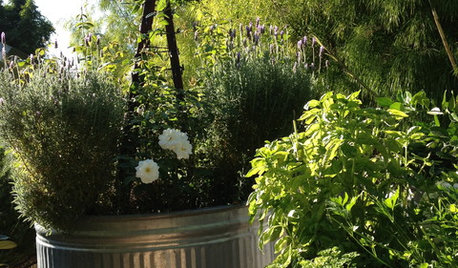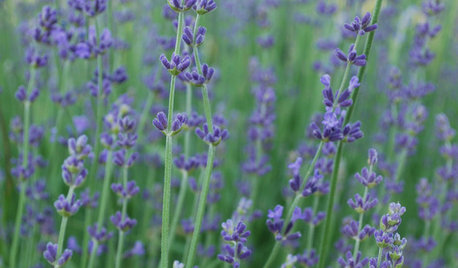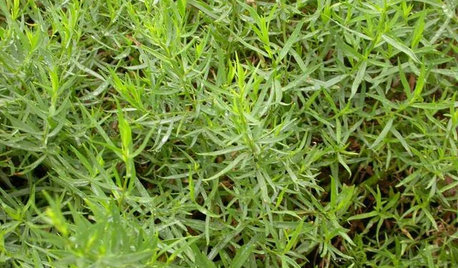Chayotes - growing tips needed
dancinglemons
14 years ago
Related Stories

FARM YOUR YARDHow to Grow Vegetables in Containers
Get glorious vegetables and fruits on your patio with a pro’s guidance — including his personal recipe for potting mix
Full Story
EDIBLE GARDENSGrow Herbs for Fresh Flavor and Good Looks in the Garden
With sun and a patch of ground, you can have all the fresh flavor you need for cooking right outside your door. Here's how to get started
Full Story
EDIBLE GARDENSHow to Grow Your Own Sweet Summer Crops
This guide will help any gardener get started on growing the freshest warm-season veggies and berries for summer
Full Story
GARDENING GUIDESYes, You Can Grow Food in a Shady Yard
Your shady garden doesn’t have to be forever barren. Berries, herbs and other shade-loving plants can produce a delicious bounty
Full Story
GARDENING GUIDESA Beginner’s Guide to Growing Succulents
Their easy-care reputation is well-deserved, but a little TLC will turn succulents into star plants
Full Story
EDIBLE GARDENSHow to Grow Your Own Cocktail Garden
Conceivably, anything edible could find its way into a cocktail. Why not make the route rather short?
Full Story
EDIBLE GARDENSHerb Garden Essentials: Grow Your Own Tarragon
Cooks swear by the spicy anise flavor of this seasoning, which is a favorite in French cuisine
Full Story
GARDENING GUIDESEssential Watering Tips for Your Edible Garden
To give your edible plants just what they need, check out these guidelines for how, when and how much to water
Full Story
GARDENING GUIDES10 Tips for Beginning Gardeners
With a simple sketch, basic tools and the right plants, you’ll be on your way to growing your first flowers or edibles
Full Story
DECORATING GUIDES8 Tips for Creating a Safe and Cozy Nursery
Learn how to design a room that will grow up with your baby and also will be comfortable for you
Full StoryMore Discussions







denninmi
dancinglemonsOriginal Author
Related Professionals
Edmond Landscape Architects & Landscape Designers · Beachwood Landscape Architects & Landscape Designers · Chattanooga Landscape Architects & Landscape Designers · Glassmanor Landscape Architects & Landscape Designers · Surprise Landscape Contractors · Arlington Landscape Contractors · Brookfield Landscape Contractors · Huntley Landscape Contractors · Manhattan Landscape Contractors · Mission Bend Landscape Contractors · Royal Oak Landscape Contractors · Weslaco Landscape Contractors · Crowley Driveway Installation & Maintenance · Brea Driveway Installation & Maintenance · Des Plaines Driveway Installation & Maintenancedenninmi
matita
zeedman Zone 5 Wisconsin
denninmi
gardenlen
cabrita
roper2008
cabrita
spaghetina
spaghetina
elisaucier_yahoo_com
onefreeman
spaghetina
cabrita
mauirose
ncvgarden
ncvgarden
cabrita
spaghetina
cabrita
mauirose
cabrita
spaghetina
cabrita
cabrita
dancinglemonsOriginal Author
gardenlen
mauirose
mauirose
cabrita
dancinglemonsOriginal Author
denninmi
sylviaIvy